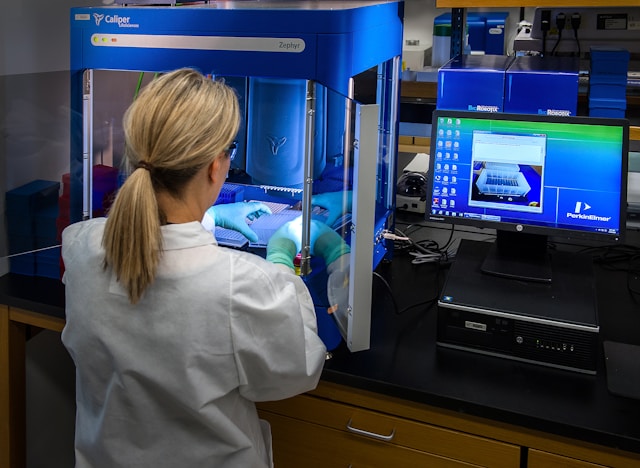Healthcare software development has revolutionized the way healthcare providers deliver services, manage patient data, and streamline administrative processes. In this ultimate guide, we’ll delve into the intricacies of healthcare software development, exploring its key components, challenges, best practices, current trends, case studies, and the future outlook.
What is Healthcare Software?
In today’s digital age, the integration of technology into healthcare has become indispensable. Healthcare software encompasses a wide range of applications designed to improve patient care, enhance operational efficiency, and facilitate communication among healthcare professionals. From electronic health records to telemedicine solutions, it plays a pivotal role in transforming the healthcare landscape.
Key Components of Healthcare Software
Electronic Health Records (EHR)
Electronic health records (EHR) digitize patient information, including medical history, diagnoses, medications, and treatment plans. EHR systems promote seamless access to patient data, enabling healthcare providers to make informed clinical decisions and deliver personalized care.
Practice Management Systems
Practice management systems streamline administrative tasks such as appointment scheduling, billing, and insurance claims processing. These software solutions optimize workflow efficiency, minimize errors, and enhance revenue cycle management for healthcare practices.
Telemedicine Solutions
Telemedicine solutions leverage technology to deliver remote healthcare services, including virtual consultations, remote monitoring, and telehealth platforms. Telemedicine enhances access to care, particularly in rural or underserved areas, while reducing healthcare costs and improving patient outcomes.
Medical Billing Software
Medical billing software automates the billing and invoicing processes, simplifying revenue management for healthcare providers. These systems ensure accurate billing, timely claims submission, and compliance with regulatory requirements, thereby optimizing financial performance.
Challenges in Healthcare Software Development
Despite its numerous benefits, healthcare software development poses several challenges that developers must address:
Security and Privacy Concerns
Protecting patient data from unauthorized access, breaches, and cyber threats is paramount in healthcare software development. Developers must implement robust security measures, such as encryption and access controls, to safeguard sensitive information.
Regulatory Compliance
Healthcare software must comply with stringent regulations, including HIPAA (Health Insurance Portability and Accountability Act) in the United States. Developers must navigate complex regulatory frameworks to ensure compliance and avoid potential legal repercussions.
Integration with Existing Systems
Integrating new software solutions with existing healthcare systems can be challenging due to interoperability issues and compatibility constraints. Developers must design flexible, interoperable systems that seamlessly integrate with legacy infrastructure to facilitate data exchange and workflow continuity.
User Adoption and Training
User adoption is critical for the success of healthcare software implementations. Developers must design intuitive, user-friendly interfaces and provide comprehensive training to ensure healthcare professionals can effectively utilize the software in their daily workflows.
Best Practices in Healthcare Software Development
To overcome these challenges and deliver high-quality healthcare software solutions, developers should adhere to the following best practices:
Agile Development Methodology
Agile development emphasizes iterative, collaborative approaches to software development, enabling teams to adapt to changing requirements and deliver incremental value. By embracing agile methodologies, developers can accelerate time-to-market, improve stakeholder engagement, and enhance product quality.
User-Centered Design
User-centered design prioritizes the needs and preferences of end-users, resulting in intuitive, user-friendly software interfaces. Developers should conduct thorough user research, gather feedback from stakeholders, and iterate on designs to create solutions that meet user expectations and enhance usability.
Continuous Testing and Quality Assurance
Continuous testing and quality assurance are essential for identifying and rectifying defects throughout the software development lifecycle. By implementing automated testing processes, developers can detect issues early, ensure software reliability, and deliver a superior user experience.
Scalability and Interoperability
Scalability and interoperability are critical considerations in healthcare software development, particularly as systems expand to accommodate growing user bases and evolving requirements. Developers should design scalable, interoperable architectures that support seamless integration with external systems and accommodate future growth.
Trends in Healthcare Software Development
The healthcare software landscape is continually evolving, driven by technological advancements and changing industry dynamics. Several trends are shaping the future of healthcare software development:
Artificial Intelligence and Machine Learning
Artificial intelligence (AI) and machine learning (ML) are revolutionizing healthcare by enabling predictive analytics, personalized treatment recommendations, and automated diagnostics. AI-powered algorithms analyze vast amounts of medical data to identify patterns, predict outcomes, and improve clinical decision-making.
Internet of Medical Things (IoMT)
The Internet of Medical Things (IoMT) refers to interconnected medical devices and sensors that collect and transmit health data for monitoring, diagnosis, and treatment purposes. IoMT technologies, such as wearable devices and remote monitoring systems, empower patients to take a proactive approach to their health and enable healthcare providers to deliver more personalized care.
Blockchain Technology
Blockchain technology offers secure, transparent, and immutable data storage solutions for healthcare applications. By leveraging blockchain, healthcare organizations can enhance data security, streamline administrative processes, and facilitate interoperability across disparate systems.
Augmented Reality and Virtual Reality
Augmented reality (AR) and virtual reality (VR) technologies are increasingly being used in healthcare for medical training, surgical simulation, and patient education. AR and VR applications enhance learning experiences, improve surgical outcomes, and enable immersive healthcare interventions.
Future of Healthcare Software Development
The future of healthcare software holds exciting possibilities, driven by technological innovation and evolving healthcare needs. Predictions and emerging technologies offer glimpses into the future landscape of healthcare, highlighting the potential impact on patient care and the healthcare industry as a whole.
Conclusion
Healthcare software development is a dynamic and rapidly evolving field that plays a crucial role in transforming the delivery of healthcare services. By leveraging innovative technologies, adhering to best practices, and addressing key challenges, developers can create solutions that enhance patient care, improve operational efficiency, and drive positive outcomes for healthcare organizations.















